A penetration tester was able to gain access to a plaintext file on a user workstation. Upon opening the file, the tester notices some strings of randomly generated text. The tester is able to use these strings to move laterally throughout the network by accessing the fileshare on a web application. Which of the following should the organization do to remediate the issue?
During an assessment, a penetration tester discovers the following code sample in a web application:
"(&(userid=*)(userid=*))(I(userid=*)(userPwd=(SHAl}a9993e364706816aba3e25717850c26c9cd0d89d==))
Which of the following injections is being performed?
A penetration tester is reviewing the security of a web application running in an laaS compute instance. Which of the following payloads should the tester send to get the running process credentials?
A penetration tester is conducting a test after hours and notices a critical system was taken down. Which of the following contacts should be notified first?
A penetration tester captures SMB network traffic and discovers that users are mistyping the name of a fileshare server. This causes the workstations to send out requests attempting to resolve the fileshare server's name. Which of the following is the best way for a penetration tester to exploit this situation?
A penetration tester is looking for a particular type of service and obtains the output below:
I Target is synchronized with 127.127.38.0 (reference clock)
I Alternative Target Interfaces:
I 10.17.4.20
I Private Servers (0)
I Public Servers (0)
I Private Peers (0)
I Public Peers (0)
I Private Clients (2)
I 10.20.8.69 169.254.138.63
I Public Clients (597)
I 4.79.17.248 68.70.72.194 74.247.37.194 99.190.119.152
I 12.10.160.20 68.80.36.133 75.1.39.42 108.7.58.118
I 68.56.205.98
I 2001:1400:0:0:0:0:0:1 2001:16d8:ddOO:38:0:0:0:2
I 2002:db5a:bccd:l:21d:e0ff:feb7:b96f 2002:b6ef:81c4:0:0:1145:59c5:3682
I Other Associations (1)
|_ 127.0.0.1 seen 1949869 times, last tx was unicast v2 mode 7
Which of the following commands was executed by the tester?
A penetration tester is performing a social engineering penetration test and was able to create a remote session. Which of the following social engineering techniques was most likely successful?
During a test of a custom-built web application, a penetration tester identifies several vulnerabilities. Which of the following would be the most interested in the steps to reproduce these vulnerabilities?
A penetration tester has been provided with only the public domain name and must enumerate additional information for the public-facing assets.
INSTRUCTIONS
Select the appropriate answer(s), given the output from each section.
Output 1
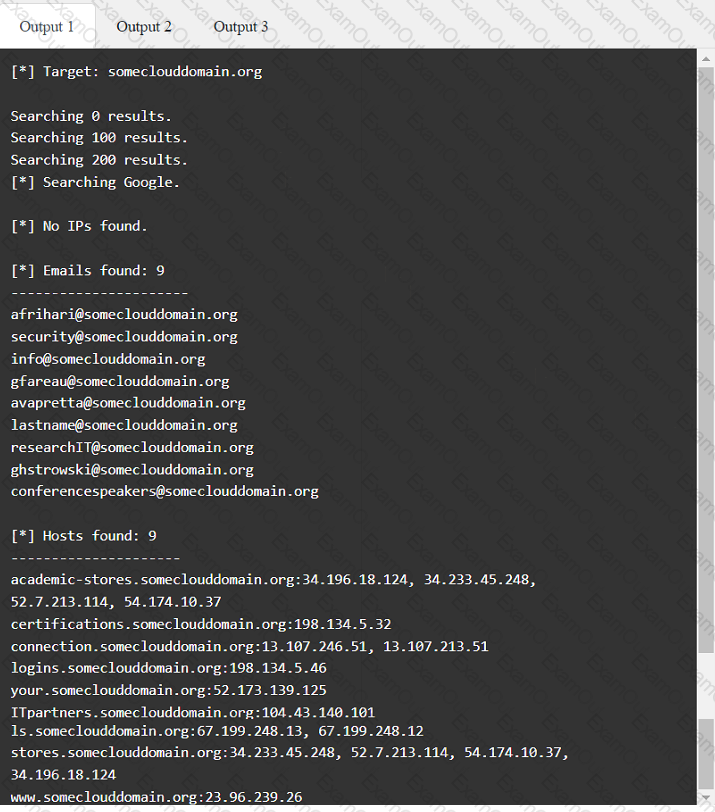
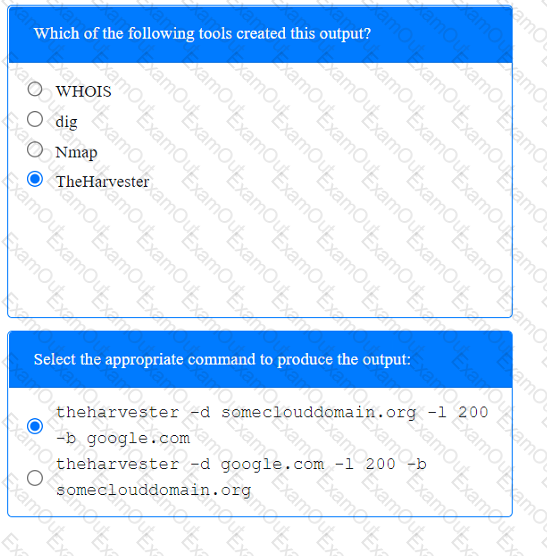
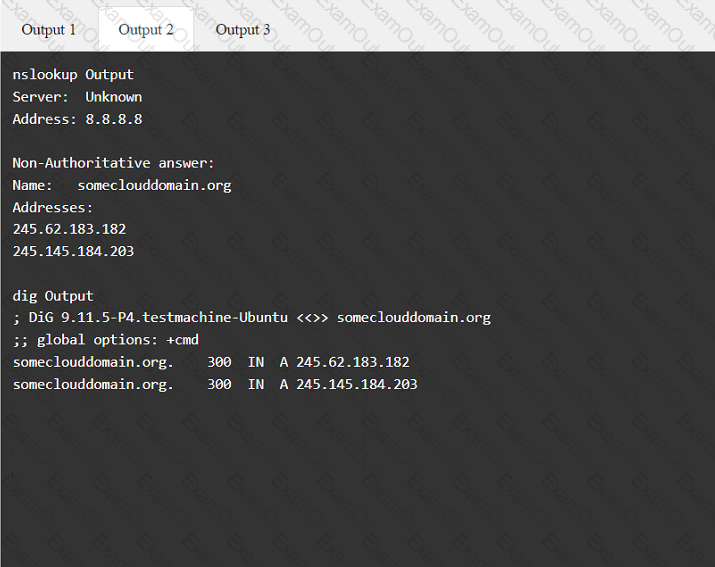
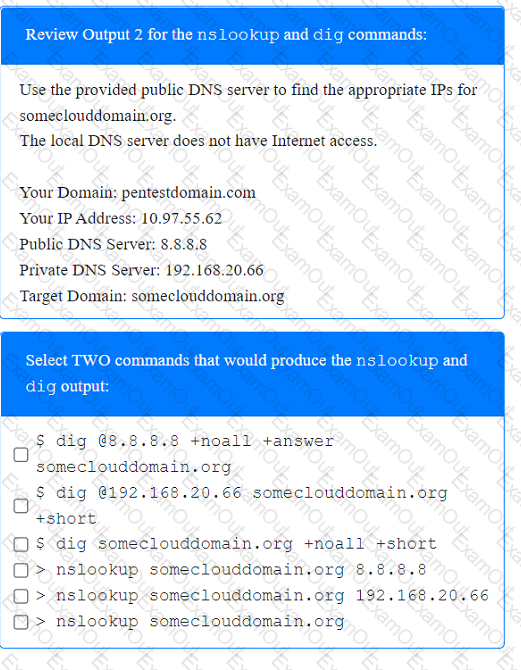
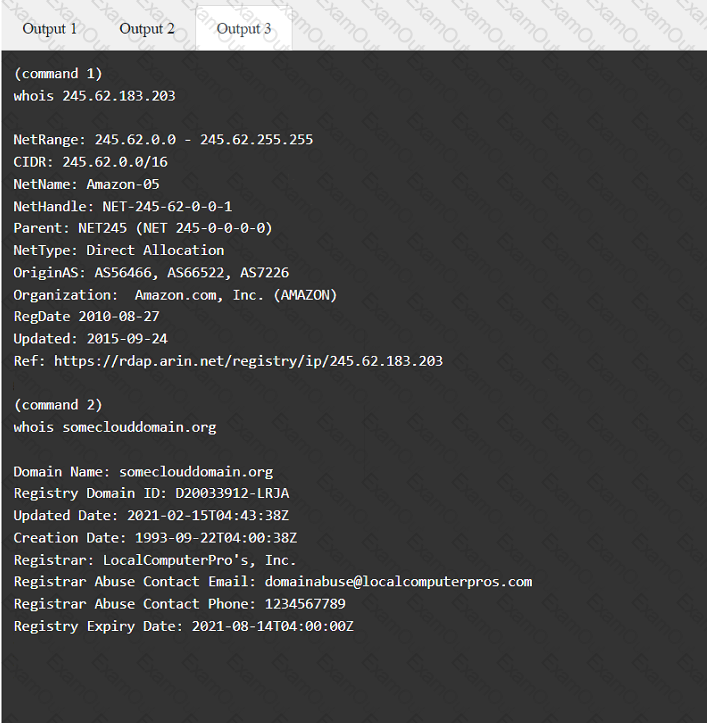
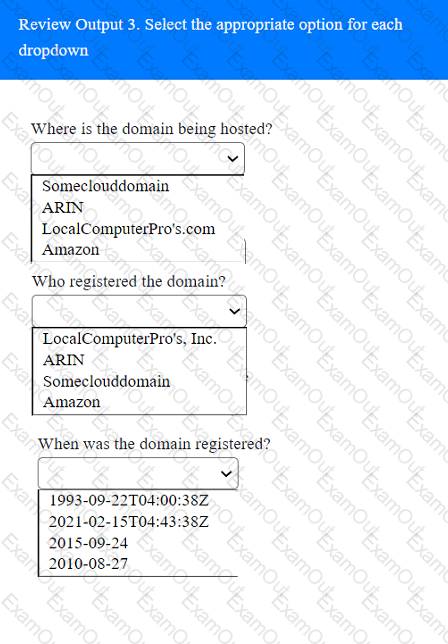
Which of the following assessment methods is the most likely to cause harm to an ICS environment?

